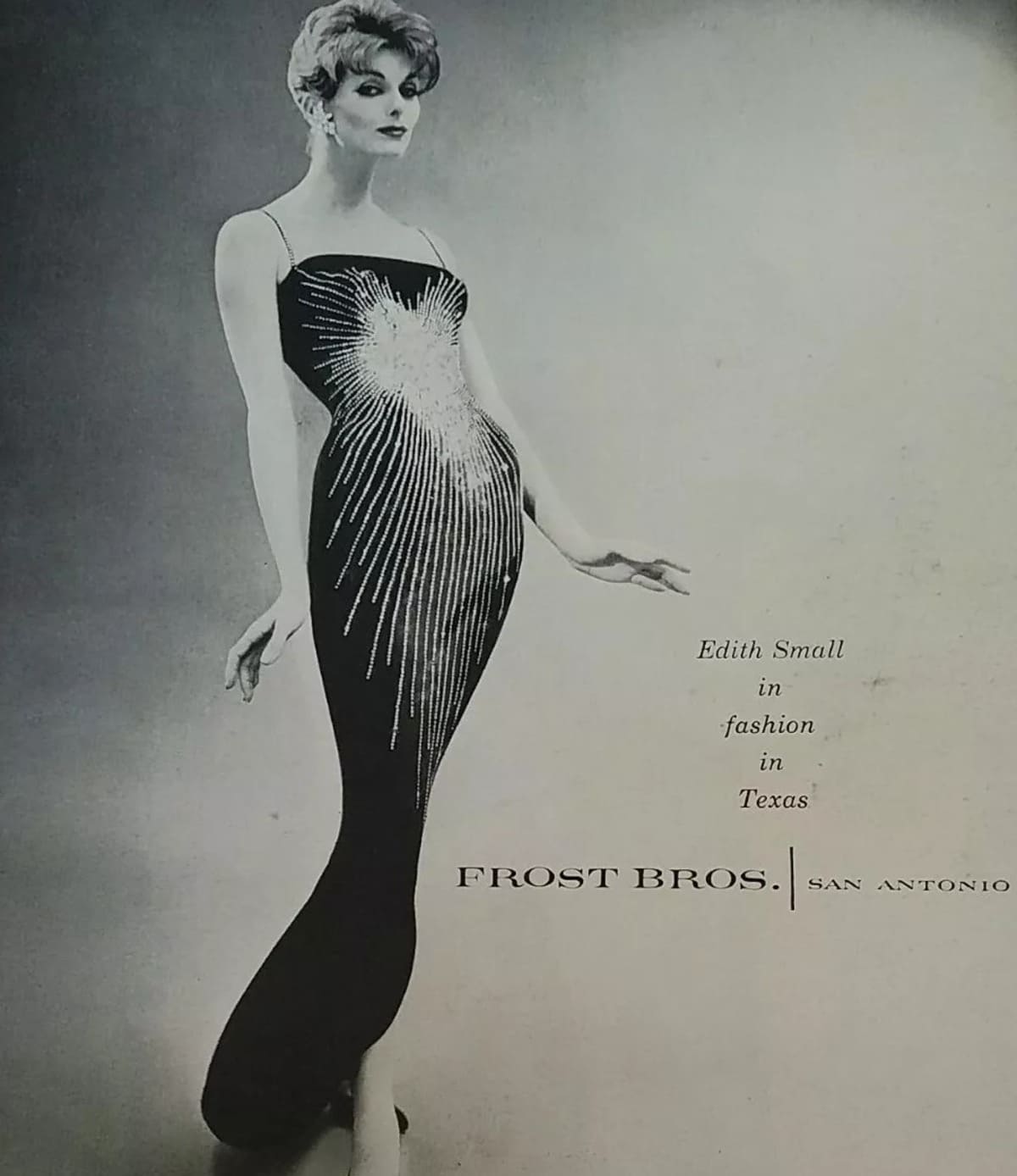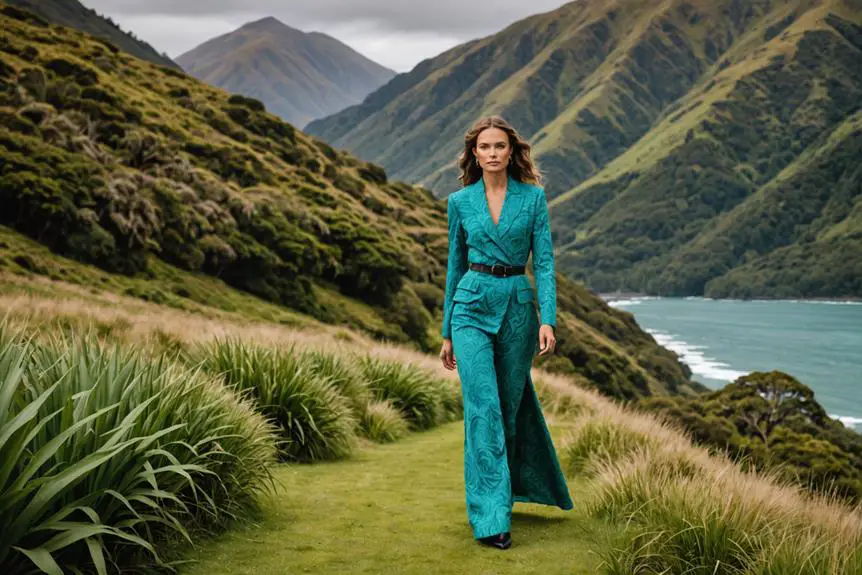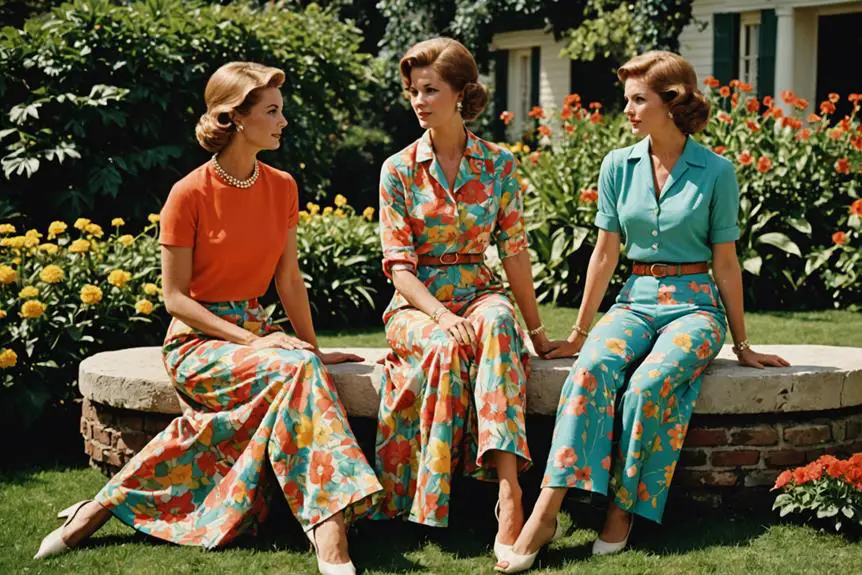Edith Small, a renowned fashion designer, carved out her niche in the fashion world with a flair for elegance and sophistication that transcended trends. Originally from Chicago, Small moved to Los Angeles in 1945, where she founded her clothing house and became a celebrated designer of feminine suits and gowns. Known for her meticulous attention to detail and use of high-quality fabrics, including French and Italian imports, her work gained admiration both on the West and East Coasts. Small’s collections were not only widely covered in the press but also beloved by clients who appreciated her graceful, tailored designs. Her unique approach blended classic tailoring with romantic touches, such as embroidered motifs and floral accents, making her garments truly distinctive.
Despite her prominence during the mid-20th century, Edith Small’s name is not as widely recognized today as some of her contemporaries like Adrian, Irene, or James Galanos. However, in her time, she was a respected figure in the Californian fashion scene, known for her feminine aesthetic and exceptional craftsmanship. Her designs reflected an inherent love for fine tailoring—a legacy she may have inherited from her family of tailors on London’s prestigious Bond Street. Each piece she created was a statement of timeless style, often adorned with delicate details like Chantilly lace, floral embroidery, and bold, structured fabrics that made her collections stand out.
Even after her passing in 1965, Edith Small’s influence lived on, as her workshop continued to produce high-quality garments under new leadership. While her name may have faded in mainstream recognition, vintage fashion enthusiasts still seek out Edith Small’s creations, identifying her legacy through subtle details such as her carefully crafted tags and iconic logo designs. Whether through the structured lines of her suits or the intricate lacework of her evening dresses, Edith Small’s impact on mid-century fashion remains undeniable, and her pieces continue to be cherished by collectors and fashion historians alike.
60s Fashion in London’s King Street
How to tell if Edith Small is vintage from the logo
Edith Small, a fashion designer known for her glamorous and elegant designs, used various logo styles over the years that can help in identifying if an item is vintage. Her logos evolved, particularly in their typography and layout, reflecting design trends of their respective eras. By examining the logo styles, you can estimate the period in which a piece was made. Below is a breakdown of the Edith Small logos based on the images provided.
1940s to 1950s Edith Small logo
- This logo features a bold, geometric design that highlights the brand name in a stacked, symmetrical manner.
- The word “Edith” is in tall, capitalized letters, with “Small” placed below it, creating a strong and structured look.
- There is a banner-like element in the middle with the word “Originals” in cursive, providing contrast to the otherwise blocky typography.
- “California” is featured at the bottom, emphasizing the brand’s origin and adding a sense of location-based pride.
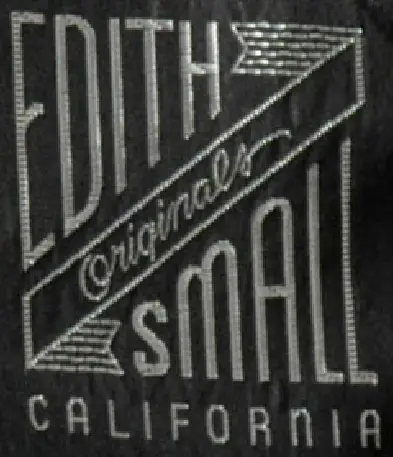
1940s to 1950s Edith Small logo
1950s to 1960s Edith Small logo
- This logo shows a dramatic shift from the geometric, bold design of the previous era to a more elegant and sophisticated cursive font.
- The script used for “Edith Small” is flowing and delicate, showcasing a focus on high-end fashion and sophistication.
- The inclusion of “Los Angeles” below the name reflects the brand’s fashionable roots in a key style hub, emphasizing luxury and location.
- The cursive font in this era conveys a sense of refinement and timeless appeal, marking this as a mid-century design choice.

1950s to 1960s Edith Small logo
How to tell if Edith Small is vintage from the tags
The evolution of Edith Small’s tags provides a glimpse into the brand’s aesthetic development from the 1940s onward. Edith Small, known for its elegant and high-quality garments, reflected the design trends of each era, from the intricate fonts and designs of the 1940s to the clean and modern look of the later decades. Examining the details of these tags, such as font styles, material quality, and additional text, is essential for identifying the authenticity and vintage status of Edith Small pieces.
Can’t figure out your vintage tags or labels? Upload a picture on our vintage tag identification page, and we’ll assist you!
1940s vintage Edith Small tags
- Tags feature cursive script with a highly stylized “Edith Small” logo.
- Often includes “Los Angeles” or “California” as part of the branding.
- The text is usually black on a cream-colored or light fabric background.
- Common descriptors such as “Imported Fabric” are sometimes included.
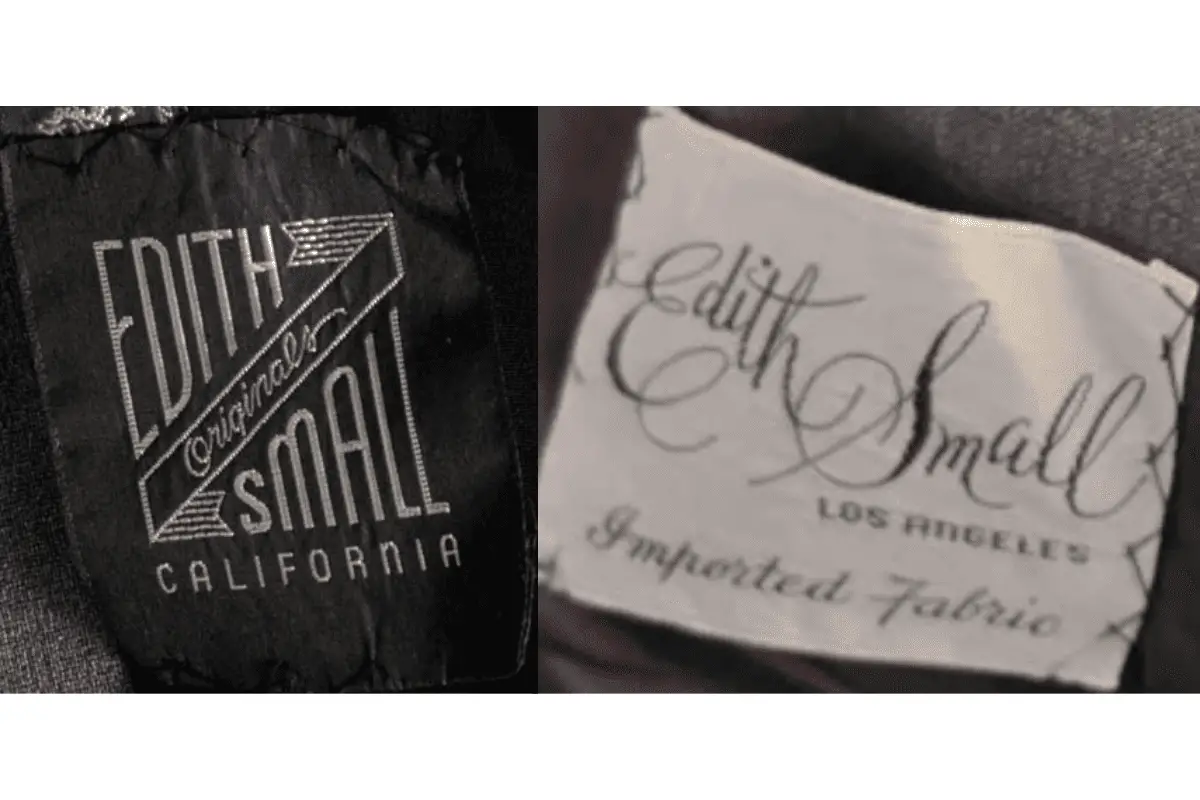
1940s Edith Small tags
1950s vintage Edith Small tags
- Maintains the cursive “Edith Small” logo but uses bolder lines for greater emphasis.
- More consistent use of “California” or “Los Angeles” in the lower section of the tag.
- Often placed on higher-quality, slightly thicker fabric tags with more stitching detail.
- Some tags from this era also display “Edith Small Originals” with a modern and geometric font style.
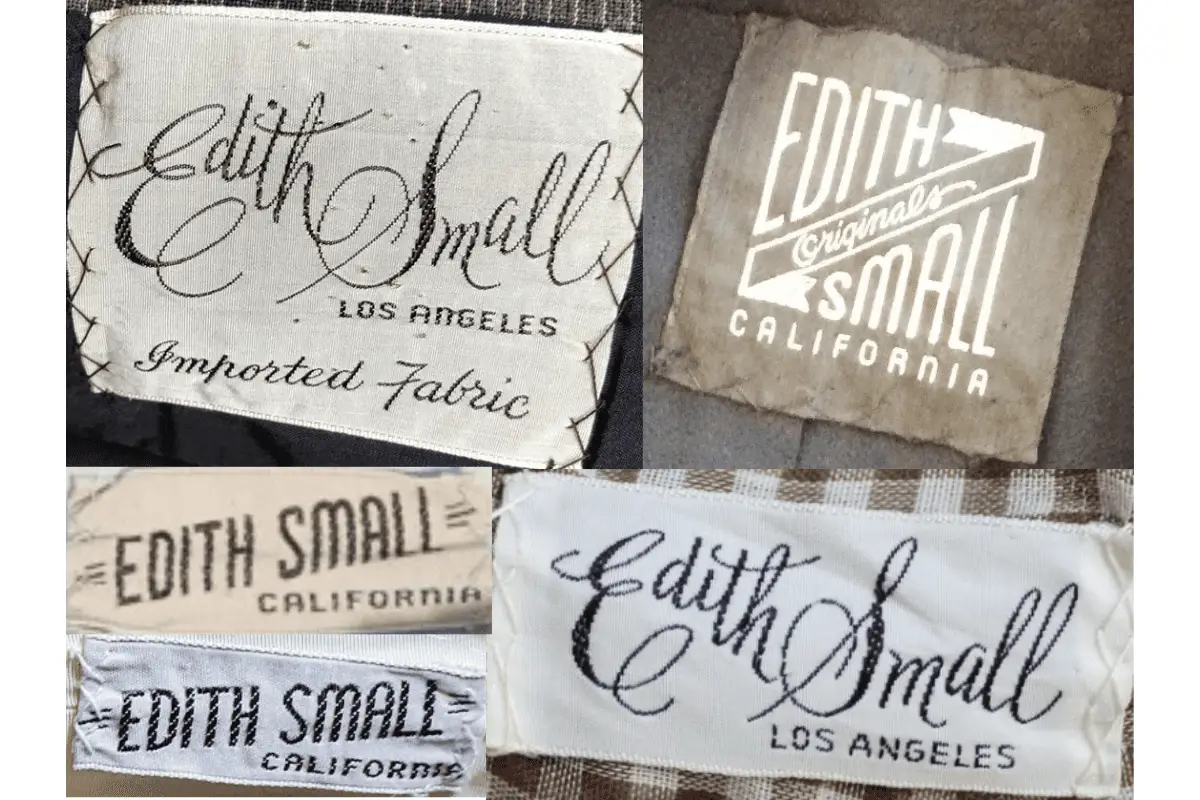
1950s Edith Small tags
